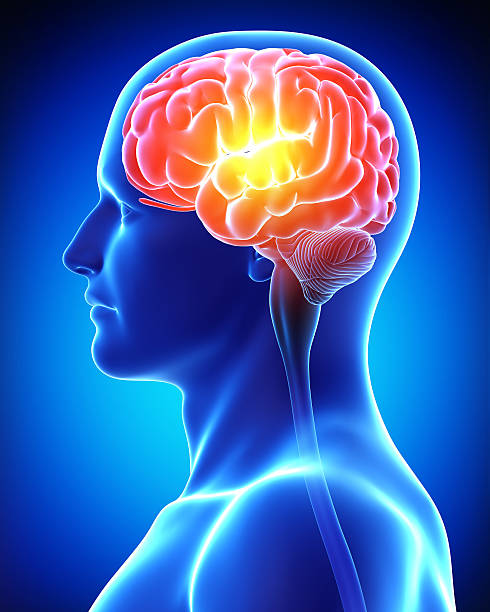In the age of digital communication, information flows faster and farther than ever before. Billions of people are connected through social media platforms, news websites, and instant messaging apps, creating an unprecedented global exchange of ideas. Yet this vast digital landscape has a dark side: the rapid spread of misinformation and fake news. These false or misleading claims can distort public understanding, fuel social and political polarization, and even threaten democratic processes. Understanding why misinformation spreads—and why people believe it—requires an exploration not only of technology but of human psychology itself.
The psychology of misinformation and fake news examines the mental processes that shape how individuals perceive, interpret, and remember information. It seeks to explain why falsehoods often feel persuasive, why corrections sometimes fail, and how emotional, cognitive, and social factors drive belief formation. In recent decades, researchers have uncovered a complex interplay of biases, emotions, memory distortions, and social influences that together make misinformation so powerful and resilient.
To comprehend this phenomenon, we must look beyond the surface of digital deception and into the deeper workings of the human mind. The problem of fake news is not merely a technological or political one—it is fundamentally psychological.
Defining Misinformation and Fake News
Misinformation refers to false or inaccurate information that is spread regardless of intent to deceive. Disinformation, by contrast, is intentionally false information designed to mislead or manipulate. Fake news is a particular form of disinformation that mimics the appearance of legitimate journalism while promoting fabricated stories, conspiracy theories, or ideologically biased claims.
These concepts overlap but differ in motivation and structure. Misinformation may arise from misunderstanding, rumor, or error; disinformation is deliberate and strategic; fake news uses the format of news media to create an illusion of authenticity. Despite these distinctions, all three phenomena share a common feature: they exploit psychological mechanisms that govern how people process and accept information.
The Cognitive Roots of Belief and Bias
Human cognition evolved to navigate complex environments filled with uncertainty, not to sift through millions of digital claims. Our brains use mental shortcuts—known as heuristics—to make sense of information quickly. While these shortcuts are efficient, they are also vulnerable to bias. Cognitive biases are systematic errors in thinking that can distort judgment, leading us to believe false or misleading information even in the face of evidence.
One of the most influential biases in the psychology of misinformation is confirmation bias—the tendency to seek, interpret, and remember information that confirms existing beliefs while ignoring or dismissing contradictory evidence. When individuals encounter news stories aligned with their worldview, they are more likely to accept them as true without scrutiny. Conversely, when faced with information that challenges their beliefs, they often question the credibility of the source or dismiss it outright.
Another key factor is the availability heuristic, where people estimate the likelihood of an event based on how easily examples come to mind. If misinformation is repeated frequently—especially through social media—it becomes more cognitively available and thus seems more plausible. The illusory truth effect, first documented in the 1970s, demonstrates that repeated exposure to a false statement increases its perceived truthfulness, even when individuals initially recognize it as false. Repetition breeds familiarity, and familiarity feels like truth.
Cognitive dissonance also plays a major role. When people hold conflicting beliefs, they experience psychological discomfort. Accepting new, contradictory information can intensify this discomfort, so they may reject it to restore mental harmony. This explains why debunking attempts sometimes fail or even backfire: correcting misinformation can inadvertently strengthen the false belief by triggering defensive reasoning.
The Role of Emotion in Misinformation
Emotions are central to how people process and share information. Misinformation often succeeds not because it is logical, but because it resonates emotionally. Psychological studies show that emotional content—especially that which provokes fear, anger, or disgust—spreads faster and wider on social media than neutral or factual information.
Fear-based misinformation can exploit anxieties about health, safety, or identity. For example, during disease outbreaks, false claims about vaccines or cures can rapidly go viral because they evoke fear and urgency. Anger-based misinformation, on the other hand, can polarize communities by portraying opposing groups as threats, stoking outrage that drives engagement and sharing. Disgust-based misinformation, such as conspiracy theories about corruption or contamination, taps into primal emotional responses that heighten attention and recall.
Positive emotions can also play a role. People are more likely to share uplifting but false stories if they evoke hope, pride, or joy. Emotional arousal—whether positive or negative—enhances memory retention and sharing behavior. The neural mechanisms behind this involve the amygdala, a brain region critical for emotional processing. When emotion is high, the amygdala signals the hippocampus to prioritize the storage of related information, making emotionally charged misinformation more memorable.
The Social Dimension of Belief
Humans are social beings, and beliefs are not formed in isolation. Social identity, group affiliation, and peer influence deeply shape how individuals evaluate information. People often accept claims that align with the values of their in-group—family, political party, religion, or nation—even when those claims conflict with objective evidence. This phenomenon, known as motivated reasoning, reflects the desire to maintain group cohesion and a positive self-concept.
Social identity theory suggests that individuals derive part of their self-esteem from belonging to social groups. When misinformation supports the in-group’s perspective or criticizes the out-group, it reinforces social identity and loyalty. As a result, false claims can spread within communities not because they are credible but because they affirm shared values.
Online environments intensify this effect through echo chambers and filter bubbles, where algorithms tailor content to user preferences. Within these digital silos, people encounter mostly information that aligns with their beliefs, while opposing viewpoints are filtered out. Over time, this selective exposure strengthens polarization and increases susceptibility to misinformation.
The desire for social approval also fuels the spread of fake news. Sharing information, even false information, can signal loyalty, moral virtue, or insider knowledge within a group. Psychologically, the act of sharing provides social rewards such as likes, comments, and validation, reinforcing the behavior through the brain’s dopamine-driven reward circuits.
Memory, Recollection, and the Persistence of False Beliefs
Human memory is not a perfect recording device—it is reconstructive and malleable. When people recall events or information, they often fill in gaps with inferences or associations, leading to distortions. This characteristic makes memory particularly vulnerable to misinformation.
The misinformation effect, a term coined by psychologist Elizabeth Loftus, refers to the alteration of memory due to exposure to misleading information after an event. In classic experiments, participants who were shown inaccurate details about a car accident later recalled the event differently, incorporating the false details into their memories. This effect has profound implications for how people remember news and events in real life.
When individuals encounter misinformation repeatedly, their memories may blend the false information with real details, creating hybrid recollections. Over time, they may become more confident in their false memories than in their accurate ones. Even when corrected, these false beliefs often persist—a phenomenon known as belief perseverance. Once misinformation is encoded in memory and linked to emotional or identity-based contexts, it becomes resistant to correction.
Another memory-related process is source confusion, where individuals remember the content of a message but forget where it came from. As a result, they may recall the claim but not whether it was from a credible source or a dubious one. This disconnect allows misinformation to survive in memory even when its source has been discredited.
The Neuroscience of Belief and Misinformation
Recent advances in neuroscience have begun to reveal the brain mechanisms involved in processing misinformation. Functional MRI studies show that belief formation and resistance to correction engage networks associated with emotion, reward, and self-referential thought.
When individuals process information consistent with their beliefs, brain regions linked to reward—such as the ventral striatum—show increased activity. Conversely, exposure to contradictory information activates regions involved in cognitive control and conflict detection, such as the anterior cingulate cortex. This suggests that confronting misinformation is not merely an intellectual process but also an emotionally charged one that engages neural circuits of discomfort and self-defense.
The prefrontal cortex, responsible for reasoning and impulse control, plays a key role in evaluating the credibility of information. However, when cognitive load is high or when emotional arousal dominates, the prefrontal cortex’s ability to scrutinize claims diminishes, making individuals more vulnerable to deception. Neural evidence also indicates that repetition of false claims enhances their neural fluency—making them easier for the brain to process—and thus more believable.
The Role of Media and Technology
While the psychological mechanisms underlying misinformation are ancient, digital technology amplifies them dramatically. Social media platforms are designed to maximize user engagement, often prioritizing sensational or emotionally charged content over accuracy. Algorithms that recommend posts based on user preferences can unintentionally promote misinformation by creating feedback loops of reinforcement.
The speed and reach of online communication make it difficult to verify information before it spreads. Studies show that false news stories on platforms like Twitter and Facebook often travel faster and reach more people than true ones. This is partly because falsehoods are designed to be surprising, emotionally provocative, and novel—qualities that attract attention and encourage sharing.
Bots and coordinated networks of fake accounts can further amplify misinformation by creating the illusion of consensus. This phenomenon, known as the false consensus effect, leads people to believe that widely shared information must be true. As a result, even skeptical individuals may lower their guard when they perceive social validation of a false claim.
Political and Cultural Contexts of Fake News
Misinformation does not exist in a vacuum. Political, cultural, and economic factors shape both its content and its impact. During elections, for example, fake news can be weaponized to manipulate public opinion, sow distrust, or suppress voter turnout. Propaganda and state-sponsored disinformation campaigns exploit psychological vulnerabilities to advance ideological goals.
Culturally, societies differ in their susceptibility to misinformation based on factors such as education, media literacy, institutional trust, and political polarization. In polarized societies, individuals are more likely to interpret information through partisan lenses, accepting misinformation that favors their side and rejecting corrections as biased.
Economic incentives also drive the fake news industry. Clickbait headlines and fabricated stories generate advertising revenue by attracting attention. This monetization of misinformation creates a self-sustaining ecosystem in which deception becomes profitable.
Correcting Misinformation: Challenges and Strategies
Combating misinformation is a complex psychological challenge. Simply presenting facts or corrections is often insufficient. Studies show that once a belief is established, corrections can trigger resistance or even strengthen the original misconception—a phenomenon known as the backfire effect.
Effective correction strategies rely on psychological principles. One approach is prebunking or inoculation, which exposes individuals to weakened versions of misinformation before they encounter it in the wild. This approach builds cognitive resilience by teaching people to recognize manipulative techniques. Another strategy is to provide alternative explanations that fill the mental gap left by retracting a false claim. When misinformation is debunked without offering a replacement narrative, the mind tends to revert to the original falsehood.
The credibility of the source delivering the correction also matters. People are more receptive to corrections from sources they trust or from within their own social group. Additionally, visual aids, clear explanations, and emotional neutrality can make corrections more effective.
The Role of Education and Media Literacy
Long-term solutions to misinformation require strengthening critical thinking and media literacy. Education systems can teach individuals how to evaluate sources, verify facts, and recognize logical fallacies. Training people to ask questions such as “Who is behind this information?” and “What evidence supports this claim?” fosters cognitive vigilance.
Media literacy also involves understanding how digital platforms operate—their algorithms, biases, and incentives. Recognizing that social media feeds are not neutral but shaped by engagement-driven algorithms can help users interpret information more critically. Encouraging skepticism, but not cynicism, is crucial: people should question claims without rejecting all sources of information as equally unreliable.
The Interplay of Psychology and Society
The persistence of misinformation reflects not only individual psychology but also broader societal dynamics. Distrust in institutions, political polarization, and the erosion of shared norms create fertile ground for fake news to thrive. When individuals feel alienated from mainstream information sources, they may turn to alternative channels that reinforce their biases.
Psychologically, misinformation fulfills emotional and social needs—it offers certainty in a complex world, reinforces group belonging, and provides simple explanations for ambiguous events. Combatting it therefore requires addressing these underlying needs, not just correcting the facts.
Societal resilience against misinformation depends on fostering trust, transparency, and open communication. When institutions act consistently and credibly, they strengthen the psychological foundation for truth acceptance. Conversely, when misinformation fills the vacuum left by uncertainty and mistrust, even the best corrective efforts may falter.
The Future of Misinformation Research
As technology evolves, the psychology of misinformation continues to adapt. Artificial intelligence, deepfakes, and synthetic media pose new challenges by making false information harder to detect. Understanding how people respond to these new forms of deception will be a crucial task for cognitive and social psychologists.
Emerging research is exploring how collective intelligence and crowd-sourced fact-checking can counter misinformation. Neuroscientists are investigating brain-based markers of belief resistance and truth perception. Computational models of information diffusion are helping to predict and prevent viral misinformation outbreaks.
Ultimately, the battle against fake news is a psychological one—a contest between the cognitive biases that make misinformation appealing and the rational capacities that allow truth to prevail. The future will depend on whether individuals and societies can harness the tools of science, education, and empathy to align human psychology with the pursuit of truth.
Conclusion
The psychology of misinformation and fake news reveals a profound truth about the human mind: we are not purely rational beings. Our beliefs are shaped as much by emotion, identity, and social belonging as by evidence. Misinformation exploits these vulnerabilities, spreading not because it is convincing in logic, but because it resonates with who we are and what we feel.
Yet understanding these psychological mechanisms also offers hope. By recognizing how biases, emotions, and memory distortions work, we can design more effective strategies to counter misinformation and strengthen our collective immunity to deception. Truth may spread more slowly than falsehood, but with insight, education, and awareness, it can endure.
In the end, the challenge of misinformation is not just about technology or media—it is about the timeless struggle between reason and emotion, between truth and belief, within the human mind itself.






